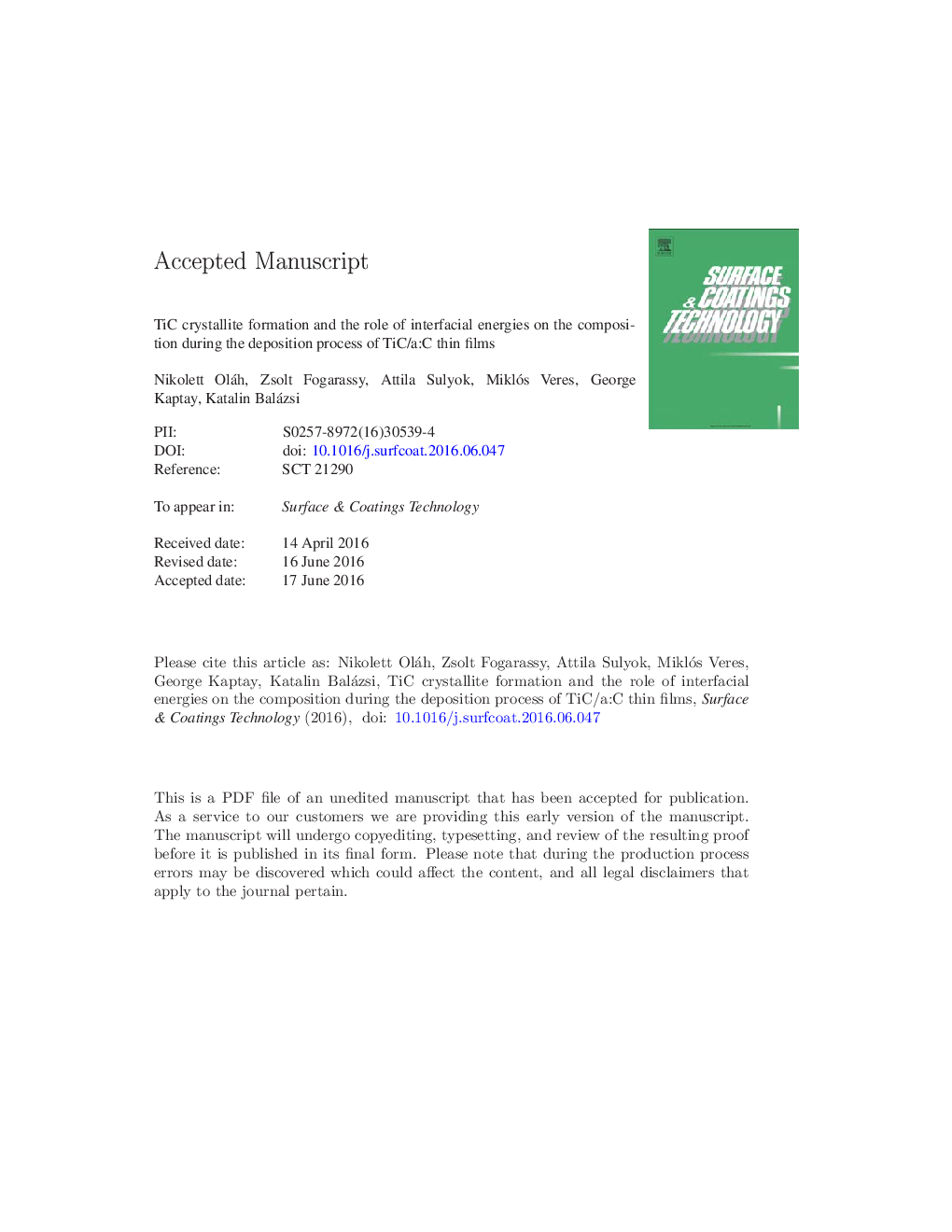| Article ID | Journal | Published Year | Pages | File Type |
|---|---|---|---|---|
| 8025280 | Surface and Coatings Technology | 2016 | 31 Pages |
Abstract
TiC/amorphous carbon (TiC/a:C) nanocomposite thin films were deposited from two targets by direct current (DC) magnetron sputtering system at room temperature. The film's composition and morphology were studied in detail by High Resolution Transmission Electron Microscopy (HRTEM), Selected Area Electron Diffraction (SAED), X-ray Photoelectron Spectroscopy (XPS) and Raman Spectroscopy. The sputtering power of carbon target (PC) was kept at the constant 150 W, while the sputtering power of titanium target (PTi) was changed between 5 W and 150 W. Additionally, a C/Ti multilayer was deposited and characterized for comparison. The growth mechanism was derived from the XPS, Raman and HRTEM observations on the grown layer structures and it was completed by a semi-empirical equation for the dependence on the average atomic fraction of Ti. The HRTEM investigations confirmed that the first nucleating phase is amorphous carbon due to its lowest surface energy among the possible phases. The second nucleating phase within the amorphous carbon matrix is TiC; its growth is kinetically not limited. The increase of Ti content resulted in larger TiC nanocrystallites and thinner amorphous carbon spacing between the TiC phases shown by HRTEM analysis. The characteristic texture of the crystallite structure was observed in the case of 120 W and 150 W of PTi. All observation confirmed the two main phases; amorphous carbon + carbide phase. The hcp titanium phase was not formed due to nucleation barrier. The average sputtered composition differs from the average deposited composition due to different nucleation barriers of different phases.
Keywords
Related Topics
Physical Sciences and Engineering
Materials Science
Nanotechnology
Authors
Nikolett Oláh, Zsolt Fogarassy, Attila Sulyok, Miklós Veres, George Kaptay, Katalin Balázsi,
